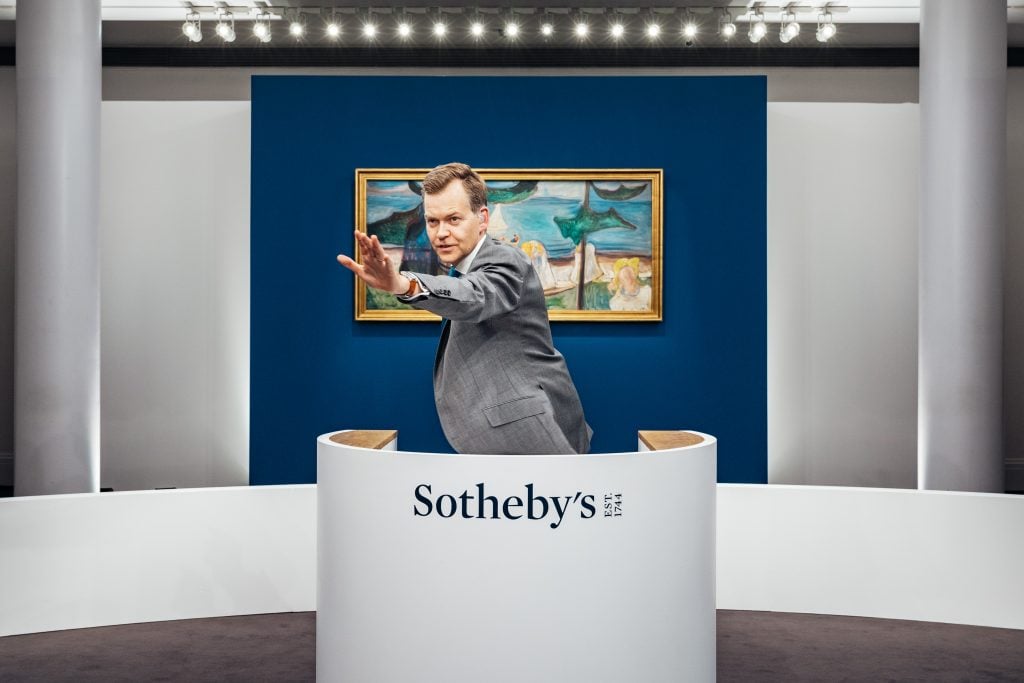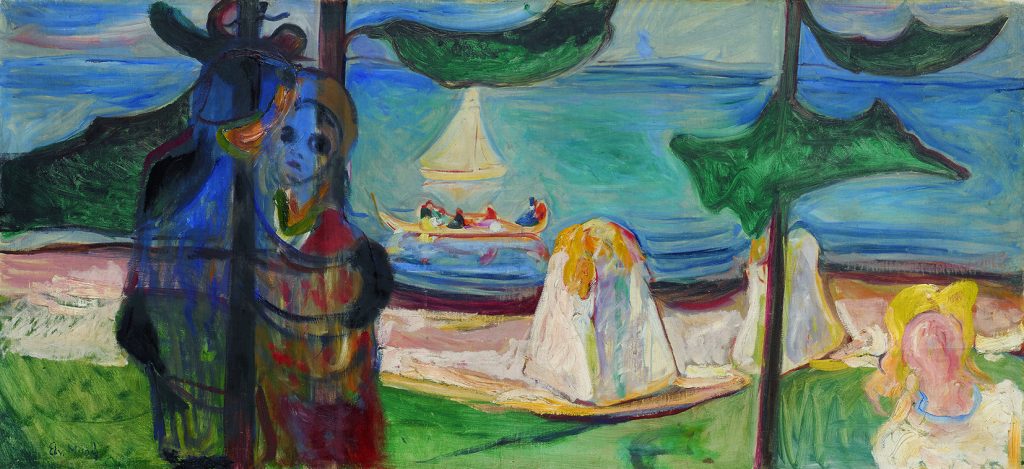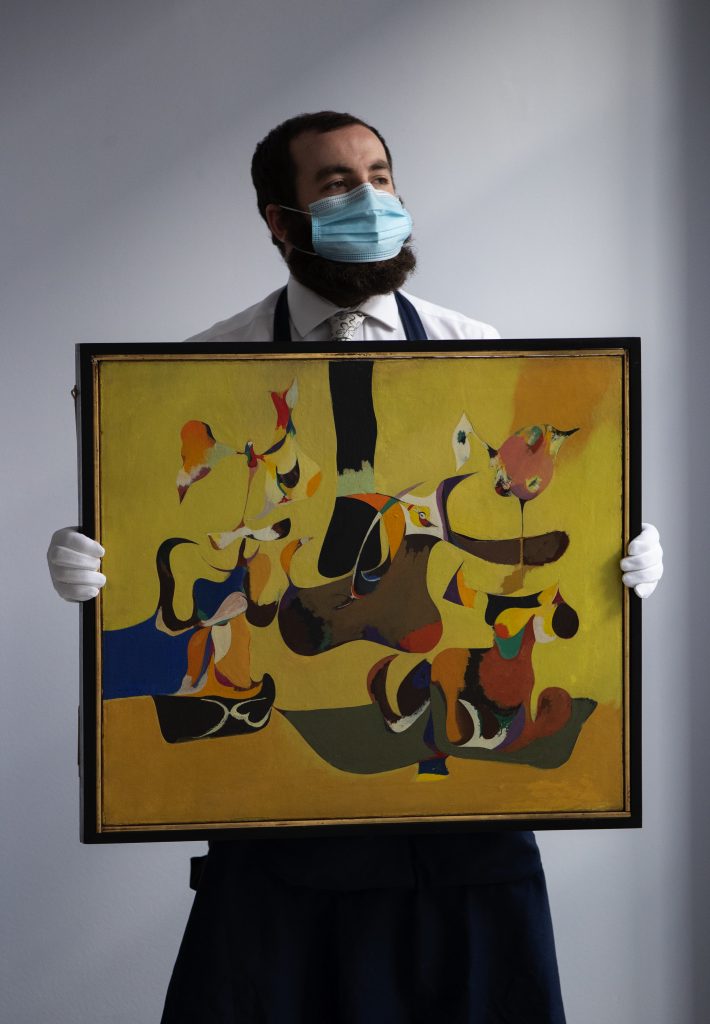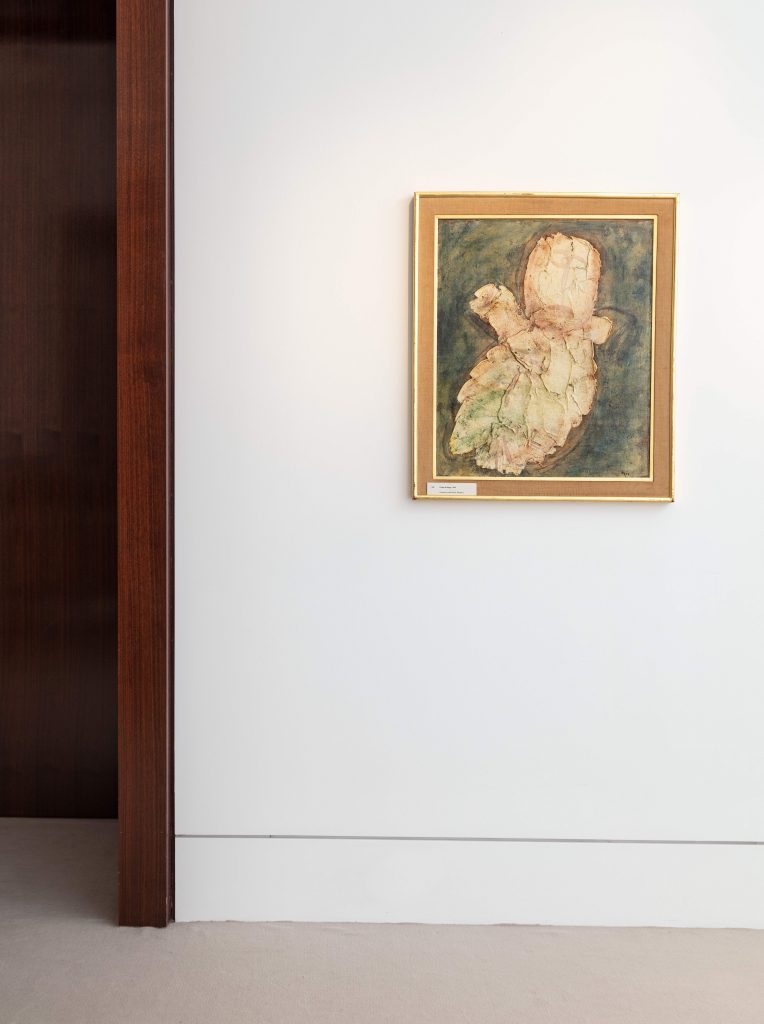Auctions
Sotheby’s Rakes in $176 Million in a Global, Five-Hour Franken-Sale Led by Edvard Munch’s $22 Million Beach Landscape
Vincent van Gogh’s Scène de rue à Montmartre sold for $15.2 million after appearing twice during the sale.

Vincent van Gogh’s Scène de rue à Montmartre sold for $15.2 million after appearing twice during the sale.

Nate Freeman

The day began on something of a sour note for the art world in Europe. Masterpiece, the London fair that’s become a staple of the summer social calendar, will be cancelled for the second year in a row due to rising case numbers and new travel restrictions. For Euro-side art lovers who thought that the summer would be some kind of a return to normalcy, think again.
But perhaps that doesn’t much matter for the auction houses. Sotheby’s managed to pull in £96.9 million ($132.6 million) yesterday during a bonanza of a sale it called “Modern Renaissance,” featuring work from the 1500s to the present. Combined with the Impressionist and Modern sale that preceded it, the day’s haul was $176.2 million.
With the traditional auction calendar kaput, Sotheby’s felt no need to stick to a single era and instead cherry picked tried-and-tested market darlings from across categories, creating a Franken-sale where the theme is not time period, region, or medium, but simply: stuff that will sell, and sell for a lot.
With travel out of the question, the sale was once again held in the weird void of a studio dressed up like a salesroom, technically held in London but also featuring live-streaming from all of Sotheby’s headquarters, giving each region at least the feeling of a home field advantage. (Remember home field advantage? It was a sports thing, something to do with the stadium.)
Yes, the vague notion of the “cross-category” sale can still draw eyerolls a year into this era of creative auction calendar programming that nobody asked for. But actually, the mixing of genres today made for a sale with a pretty diverse set of highlights—a diversity that almost, but not quite, made up for the increasingly irritating new normal of enduring all this by at a staring small window on a screen, not to mention the slog of doing so for over five straight hours.
To wit, the sale saw new records for a slew of artists from completely different backgrounds: František Kupka, a somewhat passed over Czech artist in the cohort of Kandinsky and Malevich; Piero del Pollaiuolo, an Italian Renaissance painter who had the great pleasure of once being hung next to a $92 million Botticelli; Bahman Mohasses, an Iranian artist who saw much of his work destroyed following his death; and Frank Dobson, an English sculptor who almost never comes to market.

Edvard Munch, Embrace on the Beach (The Linde Frieze). Photo courtesy Sotheby’s.
The day’s proceedings began with the Impressionist and Modern art evening sale, presided over by the auctioneer Aurélie Vandevoorde, who is head of that department at Sotheby’s Paris. The sale bought in a total of $48.3 million, with a sell-through rate of 91 percent. That sale’s highlight was the extended bidding on Vincent van Gogh’s Scène de rue à Montmartre, where interest from an online bidder pushed the price well past the high estimate of $11 million. Phone bank jockey Samuel Valette believed he had secured the work as Vandevoorde brought down the hammer, but the online bidder got a £14 million—or more than $19 million—bid milliseconds before the gavel struck wood.
“Shit,” Valette said into his phone receiver to his client after Vandevoorde said the bidder got in under the wire—Valette was unaware he had been picked up on the livestream’s hot mic.
“I was raising my paddle!” the senior specialist said.
It appeared to go to the online bidder, but there was one more twist. Later in the sale, Vandevoorde announced that the lot would be reintroduced, perhaps because the online buyer got cold feet? Regardless of why, the second time around it hammered (not to Valette) at $13.25—way higher than the estimate, but lower than it had gone for before. With fees, the final price was $15.2 million.
Then it was on to the “Modern Renaissance” sale, a smorgasbord of art-historic periods and styles. The top lot of that proceeding was Edvard Munch’s Embrace on the Beach, which hammered at £14 million, above a £12 million high estimate. With fees, it totaled £16.3 million ($22.3 million). It sold to an Asian client on the phone after ferocious bidding from other phone clients talking to specialists in the Old Masters department.

Arshile Gorky, Garden in Sochi. Photo courtesy Sotheby’s.
The second biggest lot was an Arshile Gorky landscape, Garden in Sochi, set to sell for a high estimate of £2.8 million. Instead it went to a client on the phone with Bame Fierro March for a hammer price of £7.3 million. With fees, the final price was £8.6 million ($11.8 million), and Fierro March prevailed after a long jousting match with several female colleagues that Barker rather anachronistically called “the battle of the lady-bidders.” (Between the Britishness and the cursing, it felt more like we were knocking back pints at a pub than taking lukewarm coffee to the face in our tiny New York apartment.)
Not everything was daisies and sunshine, though. Three lots with estimates in the millions were withdrawn before the sale: an Yves Klein, a Pierre Soulages, and a Mark Bradford. A work by market phenom Matthew Wong failed to start a wildfire of bidding—less because the craze for is work is over and more because the painting on offer lacked his now signature landscape-as-psychedelia trademark that’s present in the canvases that have sold into the mid-millions. The much-ballyhooed work by Piero del Pollaiuolo broke a record, but it also hammered at £3.8 million, a notch below the low estimate of £4 million.

Jean Fautrier, Corps d’otage(1944). Photo courtesy Sotheby’s.
But generally, the vibes were good in the salesrooms-slash-blank-void. (It helped that they pre-arranged for the proceedings to end on a high note by saving the announcement of a consignment for the New York sales in May—a primo 1982 Basquiat estimated to sell for $35 million to $50 million—for the end of the sale.) An unexpected highlight was the very long bidding war for Jean Fautrier’s Corps d’otage. Estimated to sell for between £500,000 and £700,000, Martin Klostefelde and Helena Newman went back and forth for more than 15 minutes until Klostefelde snagged it for his client at a bid of £2.55 million—nearly four times the high estimate. With fees, the price came to $4.2 million.
And one final highlight could hint at one reason for the relative success of auction houses this year: Art collectors have an insatiable desire to spend increasingly ludicrous amounts of money on Banksy editions, even if they exist as one of 88 other identical works. In September, some poor soul spent just over $1 million on Girl with Balloon – Colour AP (Purple), which is an edition of 88. (It was the second lot of an online sale at Christie’s titled “Banksy: I can’t believe you morons actually buy this sh*t.”) A reporter can be forgiven for thinking that hell would sooner freeze over than such a thing would happen again, but lo and behold, tonight at Sotheby’s an online bidder paid £900,000 hammer price for another one of the 88 editions of Girl with Balloon – Colour AP, and with fees, they had to pay £1.2 million ($1.5 million). It seems that if people keep on consigning Banksy prints to the auction houses, the auction houses will survive this pandemic, and the next one.